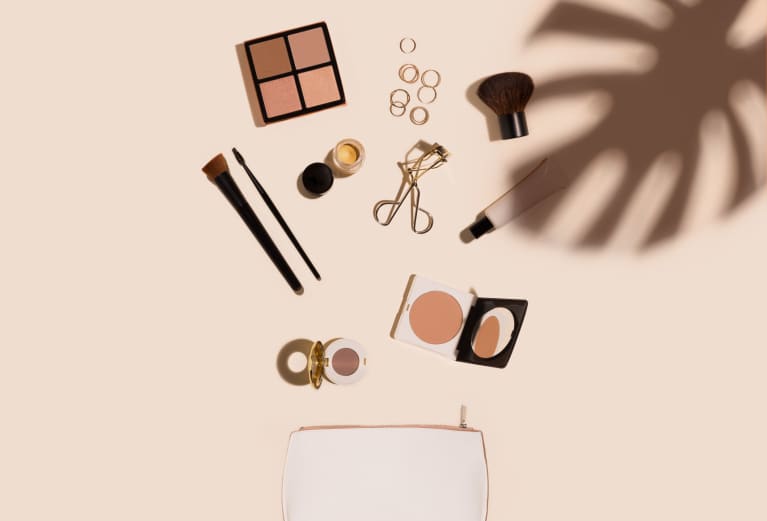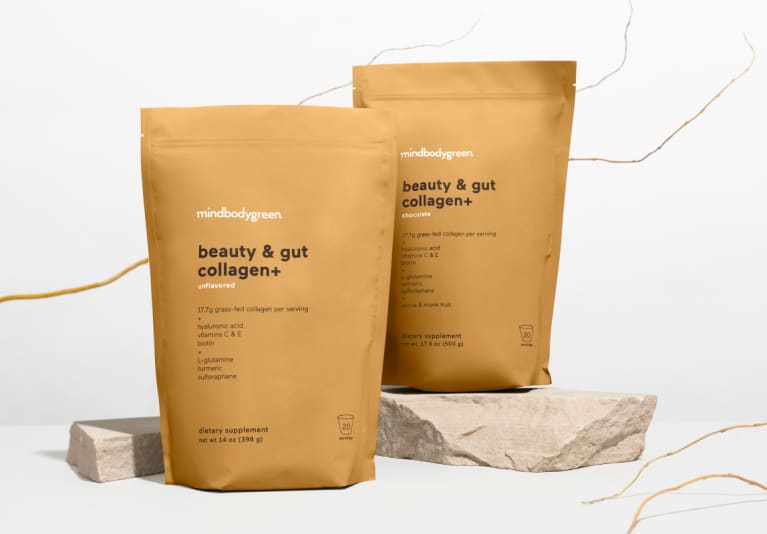
Our editors have independently chosen the products listed on this page. If you purchase something mentioned in this article, we may earn a small commission.
October 12, 2022 — 11:02 AM
While your trusty eyeshadow pallet from 10 years ago has stuck by your side through thick and thin, it might be time to separate. Yes, makeup has an expiration date, much like the rest of your beauty and skin care routine. But “makeup” is a broad category and includes many different types of formulas. So you may be wondering when, exactly, it’s time to part ways.
When does your makeup expire?
The most straightforward way to find this information is by looking on the packaging for what’s formally called a Period-After-Opening label, or a PAO. This looks like a little jar with a number followed by a capital, “M,” symbolizing months. So if your foundation has the “6M,” label on it, you have about six months to use it after opening.
If you can’t find the label or you have more questions about expiration, it’s best to contact the company for answers. They’ll be able to guide you on the nuances of their own formulas.
However, there are some general guidelines for makeup life span, and it varies from lipstick to foundation to powder and beyond.
Here’s a quick crash course (with help from some experts) to help you get an idea.
beauty & gut collagen+
A powerful daily ritual for glowing skin and strong hair & nails*

Up first, we have the base layer. Foundation can last anywhere from 6 to 18 months, typically leaning toward about 12 months. On occasion, you’ll find a foundation that has a 24-month shelf life, too.
However, if you notice the formula starting to apply in an unusual manner (pilling, clumping, drying out, etc.), you’ll want to toss it regardless.
This is especially important for liquid foundations: “Foundations are water-based and therefore are a more favorable environment for bacteria to grow,” board-certified dermatologist and YouTube creator Andrea Suarez, M.D., FAAD, tells mbg.
Concealer generally lasts from 6 to 12 months. You’ll know your concealer has gone bad if it begins to oxidize and turn orange upon application. Just the same with foundation, be sure to toss your concealer should anything start smelling or looking off in general.
Typically concealer is packaged with a wand that goes from the tube, touches skin, then goes back into the tube. Over time this can cause contamination (from bacteria or buildup on the skin), so tossing your concealer after it expires is even more important given that factor.
Setting powder: 12-18 months
Powder products generally last longer than liquid, so your setting powder should be good for 12 to 18 months post-open. Remember to wash your powder brush once a week regardless as bacteria can accumulate and spread to your powder.
Blush and bronzer: 12-24 months
Powder blush and bronzer products can last up to two years. However, with the rise of liquid complexion products, it’s important to note that cream blush and bronzers will likely have a shorter shelf life, about 12 to 18 months instead.
“Eye makeup is more likely to pick up bacteria, given the proximity to the mucous membranes with each application,” Suarez says. This can lead to irritation of the eye itself or the sensitive surrounding skin including the waterline, eyelid, and under-eye. Hence, why most eye makeup products should be tossed between 3 and 6 months.
Mascara lasts about 3 to 6 months. You should be extra mindful of your eye makeup products shelf lives, as studies show they’re generally filled with plenty of bacteria by the end of their term. Mascara and other eye makeup products get close to the eye and could lead to an infection if bacteria finds its way onto the eye itself.
“The easiest way to tell if your mascara is contaminated or is too old is to give it a sniff,” makeup artist Jenny Patinkin once told mbg. “If it smells sour or a little acidic, then toss it right away.”
Powder eye shadow should be tossed after 3 to 6 months. While the formula itself may not be expired at this benchmark, it’s important to prioritize eye health. If you’re using an eyeshadow daily, lean toward 3 months. If it’s more occasional use, 6 months should be fine.
Liquid eyeliner expires anywhere from 3 to 6 months, if it doesn’t dry out before that. Pencil and crayon liners should be tossed around 3 to 6 months as well, especially if you’re using them on the waterline. Eyeliner pencils can be a more hygienic option, as you shave them down every week or so, minimizing repeated exposure.
Lipstick expires after 12 or so months. You’ll know it’s time to swap it out if the texture begins to change. This could mean drying out or clumping up.
However, Patinkin notes you may have some wiggle room with lipsticks: “Often because they are made with preservatives that keep them from oxidizing or hardening,” she notes. “A couple of years is fine to hang on to a lipstick.”
Lip gloss expires after 12 months. If you want your gloss to stay fresh, make sure you store it in a cool environment and always twist the cap tightly closed.
Though you’ll probably use up your lip balm in a few months, they expire after 12 months. Since lip products touch the mouth again and again it’s easy for them to get covered in bacteria quickly.
Nail polish expires after 12 to 24 months depending on the formula. If you notice your polish separating in the bottle even after a good shake, that’s a telltale sign it’s ready to go. Polish can also appear goopy and clumpy if it’s gone bad.
Perfume and cologne expire after 12 to 15 months depending on the formula and the scent. More natural-leaning perfumes expire quicker than those packed with alcohol and stabilizers. If you start to see a shift in color, notice aroma changes, or see sedimentation in your perfume, toss it.
Signs your product has gone bad.
While the true signs of expiration differ from product to product, a few general clues yours has gone bad include:
- Change in smell
- Change in color
- Formula separation
- Poor application
Risks of using expired makeup.
Apart from frankly not working as well, expired makeup may actually pose a health risk to your skin—especially liquid products. As our experts have noted throughout the article, makeup can become a breeding ground for bacteria, which can irritate the skin, lips, and eyes. In some more serious cases it can even cause infection.
Quick tip:
If you know you won’t use up a full-sized product before its expiration date (i.e., you only use it on occasion), opt for a smaller trial size to ensure you’re not wasting product and money.
Preservatives get a bad rap in the clean and natural beauty space. However, they are a very much needed component to formulas, as they inhibit pathogenic bacteria from growing in aqueous-based emulsions. Sure, there may be some preservatives out there that you may choose to avoid (triclosan, parabens, and aldehydes), but trust us: Mold in your mascara is worse.
“[People want to avoid preservatives,] but in modern conventions, products are shelf stable for over a year. And keeping something shelf stable for years, especially natural ingredients and botanicals, is actually not natural,” says cosmetic chemist Javon Ford. “So what people have to understand is to have a preservative-free product, that means it essentially becomes perishable, that you have to refrigerate, use up within two weeks, and at that point it just becomes food.”
The good news is that there are a plethora of less irritating and problematic preservatives out there. These tend to include preservatives and co-preservative systems to bolster their powers—and can include things like benzyl alcohol, salicylic acid, sorbic acid, benzyl alcohol, dehydroacetic acid, sodium benzoate, and more. Some of these preservative systems are even ECO-CERTIFIED.
But please just know: When you see preservatives on your INCI list, it’s a good thing.
Just because your favorite makeup products are ride-or-die status doesn’t mean you can use them for years on end. Be sure to check the expiration date on your makeup products and switch them out if you start seeing funky changes. Oh, and FYI: It’s not just makeup that has a shelf life—skin care is one and the same.

